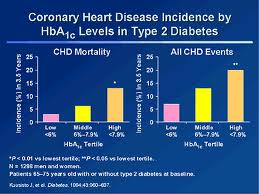The almost epidemic proportions of Type 2 diabetes has raised grave concern, but healthcare providers agree that adult onset diabetes is not just a disease that strikes out of the blue. Patient education remains a basic concern, as there are factors that predispose people to the disease. There are known risks for those who are overweight and when inactivity is the main lifestyle. Family history plays a role and ethnic origin can make the patient more vulnerable to the development of diabetes. Population groups at risk are African-Americans, Native Indians, Pacific Islanders, Hispanic-Americans and Asian-Americans. There is a stage which is known as pre-diabetes. The blood glucose level is elevated, but it is not high enough that the condition is labeled as a full-blown diabetes. The good news is that with screening of the blood sugar the first signs of elevation can be detected with a blood sugar monitor at home. This way this condition can be picked up and the progression to diabetes can be avoided with proper diet and exercise.
In a large study of the Diabetes Prevention Program people who lost 7 % of their body weight and exercised 150 minutes per week cut their risk of developing type 2 diabetes by 58%. For patients in the age group over 60 the risk was reduced by 70%.
It is important that all persons who are at risk are screened. The laboratory tests involve fasting overnight, after which the fasting glucose levels are checked. A glucose tolerance test is the second test. After overnight fasting the patient receives a glucose-rich drink and blood sugar levels are monitored afterwards to establish how well the glucose is metabolized. These tests are inexpensive and are usually covered by health insurance.
More information about:
1. Diabetes type 2: http://nethealthbook.com/hormones/diabetes/type-2-diabetes/
2. Exercise (fitness): http://nethealthbook.com/health-nutrition-and-fitness/fitness/
Reference: Dec. 25, 2006/January 1, 2007 issue of U.S. News & World Report, page 55
Last edited November 2, 2014











